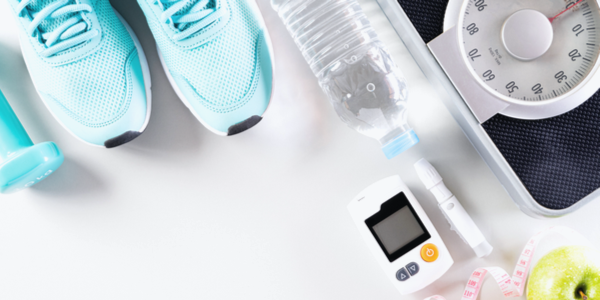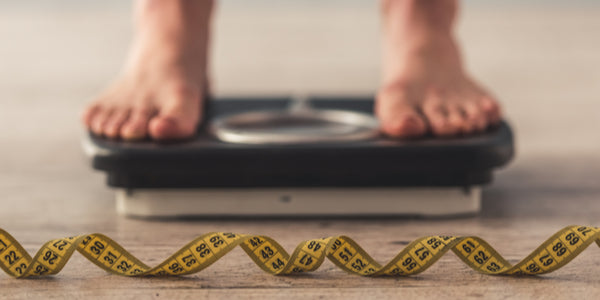
Diet is not the only solution for high blood sugar. There are several simple management solutions for those wondering how to lower blood sugar or how to reduce blood sugar levels. Understanding diabetes and exercise, adopting a healthy lifestyle, and monitoring blood sugar are key components of a successful treatment plan.
Read on for more information, including exercise and diabetes. Plus, more than 15 simple steps to take today to lower blood sugar levels.
What Reduces Blood Sugar Quickly?
While there is no quick fix, there are many simple solutions for balancing blood sugar. High blood sugar is a common problem. However, it is important to establish a unique treatment plan that works for the individual.
Small actions that add up over time make the most difference. Incorporating intentional actions into each day is a great way to manage blood sugar levels and improve overall health.
What Will Lower Blood Sugar Levels
Blood sugar levels can be successfully managed when using a combination of methods. Diet and medication play a significant role, but so does sleep, exercise, and monitoring.
The best way to lower blood sugar levels is to incorporate accessible, actionable management methods into an everyday routine. Smart and simple habits can help make balancing blood sugar an easier task.
Lower Blood Sugar Quickly and Naturally
Medication and diet are not the only solutions that lower blood sugar. In fact, there are several simple ways to reverse diabetes or high blood sugar.
The following list includes common ways to lower blood sugar naturally:
• Exercise regularly
• Practice sleep hygiene
• Manage stress levels
• Attend regular or routine appointments
• Understand family history of diabetes
• Commit to a healthy lifestyle
• Monitoring methods
Can Exercise Lower Blood Sugar?
Exercise helps to lower blood sugar. The body's muscles rely on glucose (blood sugar) for fuel. Through exercise, the body can find blood sugar balance and maintain a healthy weight.
Will Walking Lower Blood Sugar?
A daily walk is one of the easiest and most common methods of keeping blood glucose levels down. This is because exercise influences insulin resistance by helping the body to respond to insulin more effectively.
Many people not only enjoy a daily walk, but they also may reduce their reliance on blood sugar medication.
How to Lower Blood Sugar Levels and Cholesterol
The American Heart Association recommends a three-pronged approach to managing cholesterol. This approach can also apply to lowering blood sugar levels:
1. Check: A key part of controlling risk is knowing the numbers. Check blood sugar and cholesterol levels regularly.
2. Change: Beyond diet changes, make lifestyle choices that improve blood sugar and cholesterol levels.
3. Control: With the assistance of a qualified healthcare team and support system, manage cholesterol and blood sugar levels to keep them in a healthy range.
Check, change, and control is not a one-time event. Rather, it is a continuous process that can produce profound results. Adjusting and readjusting the plan to fit an individual's needs helps to create a healthy lifestyle and improved quality of life.
Lower Blood Sugar and Cholesterol
High cholesterol is controllable, yet it is still a major risk factor for developing chronic and serious diseases. It contributes significantly to the following conditions:
• Coronary heart disease
• Heart attack
• Stroke
High blood sugar increases the risk of complications with diabetes. These complications can be serious and include nerve damage and reduce quality of life. Damage can also affect other organs, including the kidneys, eyes, and heart.
Common Risk Factors
Being aware of common risk factors can help identify disease risks. Common risk factors associated with high blood sugar and cholesterol include:
• Smoking
• High blood pressure
• Diabetes
• Sedentary lifestyle (inactivity, lack of daily movement or structured exercise)
• Excessive dietary sugar or refined carbohydrates
• Sleep disturbances
• Stress
• Weight gain or obesity
• Abnormal cholesterol or triglyceride levels
• Age (risk increases after age 45)
• Prediabetes
• Gestational diabetes
• Polycystic ovary syndrome (PCOS)
• Genetic history or family history of diabetes
Having more than one risk factor for high blood sugar makes the risk for disease rise in severity. In other words, having more risk factors for high blood sugar makes the overall risk of developing disease higher.
Non-Dietary Ways to Lower Cholesterol
The following list contains 16 helpful tips to try today to lower blood sugar. Remember, the best approach for lowering blood sugar is usually a combination of methods. Choosing manageable methods that work for a daily routine can create positive changes.
Try one of the following ideas today!
1. Attend Appointments
Routine check-ups with healthcare professionals help people with high blood sugar manage diabetes and other health conditions. One should report symptoms such as eye problems, foot ulcers, or nerve damage to their physician and other providers.
2. Average Awareness
Remaining aware of average levels and healthy ranges can be a great indicator of individual blood sugar management. Some important numbers to know include the following:
• Blood pressure
• Cholesterol
• Hemoglobin A1c (HbA1c)
• Triglyceride levels
Hemoglobin A1c measures glucose over a few months. It provides a more accurate picture of blood sugar management.
3. Accept Assistance
It's important to remember that those struggling to balance blood sugar are not alone. Coordinating care with healthcare professionals and teams can make managing blood sugar much more, well, manageable!
A healthcare team for high blood sugar should consist of at least the following:
• Primary care provider (PCP)
• Registered Dietitian (RD)
• Certified Diabetes Educator (CDE)
• Optometrist (eye doctor)
• Podiatrist (foot doctor)
4. Ask An Advocate
Support groups and advocacy organizations provide management tools and motivation. They can help those trying to lower blood sugar to stay engaged in their individual plan of action while also connecting with like-minded individuals.
Look for tips on living a balanced life despite disease or diabetes. Sharing ideas can help those with common conditions connect. Supportive communities can include, but are not limited, to the following:
• Family members
• Close friends
• Online support groups
• In-person support groups
• Advocacy organization portals
5. Seek Accommodations
Associations like the American Diabetes Association (ADA) work with travel and transportation administration regularly. This is to ensure that passengers managing diabetes or sharp shifts in blood sugar can be accommodated while traveling.
6. Access Ahead of Time
Dining out with diabetes or high blood sugar can seem scary. Luckily, modern menus are almost always online. Take advantage of online information before dining out to diminish the risks of ordering dangerous food choices.
7. Alleviate Adrenalin
Stress leads to high blood sugar. To make matters worse, stress prompts coping mechanisms like overeating sugar-laden foods.
Instead of overeating, manage stress in these soothing ways:
• Take a warm bath
• Go on a walk
• Read a book
• Listen to music
• Practice yoga or meditation
• Find ways to laugh
8. Advocate Alone or As a Group
Volunteering and supporting research can lower rates of depression. Whether alone or as a group, find a way to donate time, money, or other resources. Advocacy agencies often rely on volunteers to make events happen and organize efforts effectively.
9. Attend Awareness Activities
Take the opportunity to attend organized events, digital discussions, or local conferences. This is a valuable way to connect with other advocates and caregivers. It's also a great way to learn from the experts or about the most recent research.
10. Use Apps & Activity Trackers
Technology can assist in managing disease. Search the phone app store for diabetes or symptom management applications. These digital diaries keep an organized online network of information at the touch of a button.
Another advantage of apps is that they can easily provide tips, videos, trends, and visuals to illustrate and analyze disease over time. Activity trackers also help to monitor health and lifestyle routines and make it easy to adjust accordingly.
11. Avoid Alcohol
Alcohol causes drops and spikes in blood pressure. Moderation is needed to responsibly drink. Limit drink intake to one for women and two for men, or avoid alcohol altogether. One drink equals:
• 12 oz of regular or light beer
• 5 ounces of white or red wine
• 1.5 ounces of liquor
Mixers are especially dangerous because they not only include alcohol but also soft drinks or syrups. These drinks are sugar-rich and can cause sharp spikes in blood sugar. Beyond that, alcohol can interfere with medications that are being taken to manage diabetes or high blood sugar.
12. Achieve Appropriate Weight
Staying at a healthy weight is one of the cornerstones of disease management for type 2 diabetes. Adopting a health plan that includes progress towards a healthy weight helps the body to better utilize blood sugar.
13. Analyze Sleep Patterns
Blood sugar is negatively affected when sleep is put on the backburner. Sleep upsets may even lead to diabetes development. Importantly, too, be aware of sleep habits and get adequate amounts of quality rest.
14. Accept Advice
Those with high blood sugar and diabetes may know their own bodies best. However, it is important to listen to educated experts as well.
Also stick to strategies that work, such as utilizing the BistroMD diabetic meal program.
15. Be Active (How to Lower Blood Sugar With Exercise)
Exercise is one of the major ways to manage diabetes. Muscles use blood sugar for fuel, which helps to manage blood sugar levels in the body. It also helps many people reach a healthy body weight, which also improves blood sugar levels.
Fun and easy ways to exercise include the following:
• Take a Zumba class
• Salsa dance
• Kickbox
• Yoga
• Tai chi
• Run a race
• Ride a bike or tandem bike
• Walk the dog
• Take a hike
• Do a one-song workout
16. Take Advantage of Resources
Access information on living with diabetes or balancing blood sugar with a variety of resources, including online or at a local library. Make sure the information is provided by a reputable source such as a healthcare professional or association.
The Final Word
Diet and medication are important methods of lowering blood sugar. However, simple solutions such as exercising, managing stress, and monitoring symptoms can also improve blood sugar levels.
Daily shifts toward healthy habits can make all the difference for long-term health and wellness, for blood sugar and beyond.
References:
American Heart Association. What is Cholesterol? (Cholesterol 101: An introduction). Heart. Published November 6, 2020. https://www.heart.org/en/health-topics/cholesterol/about-cholesterol.
Sharecare. Strategies for Managing Type 2 Diabetes. Sharecare. https://www.sharecare.com/pages/strategies-for-managing-type-2-diabetes?gclid=CjwKCAjwj6SEBhAOEiwAvFRuKEGXknuVT-x8Oyjava0oFtupqaX-XpVuaoZGSoqAZJYighhJawE0pxoCkkYQAvD_BwE.







